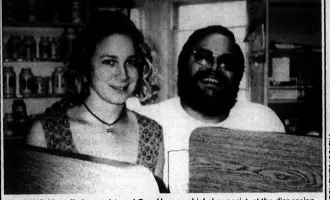
How to Hustle in Science Journalism
Science journalism has flooded our newsfeeds over the past year with daily stories about COVID-19. This urgent need for news has placed writers with science expertise at center stage.
Science journalism might seem like a far cry from breeding mice, splitting cells, or taking patient histories, but freelance writing about science offers its own rewards.
Freelancers have the freedom to work from anywhere, shape their own schedule, and follow their curiosity. So what freelance writing opportunities are available after obtaining a doctoral or professional degree?
On April 22, Dr. Esther Landhuis spoke to students about the ins and outs of being a freelance science journalist at Synapse’s third annual science speaker event. Landhuis’ stories have appeared in outlets such as Scientific American, NPR, Nature, Undark, and Quanta.
“I think you'll find, if you talk to other people in science journalism, many of us weren't really aspiring to do what we do,” Landhuis said. “At some point, we embarked on an adventure and ended up staying.”
From PhD to journalism
Landhuis' parents met at school in Hong Kong and immigrated to the U.S. Growing up in California, Landhuis was convinced she would go into science.
“My immediate and extended family were all scientists and mathematicians, so I guess you would say science was sort of a default path for me,” Landhuis said.
She received her bachelor’s degree from Stanford University before starting a PhD in immunology at Harvard University. It was there, during a particularly difficult period in her research, she began to consider careers outside academia.
“I found myself at a time when you should be looking forward to finishing your thesis and defending soon, instead I found myself with zero publishable data,” she said.
The situation led her to “a lot of soul searching,” and Landhuis began to read Alternative Careers in Science: Leaving the Ivory Tower, a book on careers for PhDs ranging from patent law to consulting.
“I didn’t know that science journalism was a thing until reading about it at age 25,” she said.
Back then, careers outside the research track were not commonly talked about.
But Landhuis had found a new direction. After switching research projects and graduating from her PhD program, she entered the UC Santa Cruz Science Communication Master’s Program.
“They really just threw us into the fire from day one,” she said, describing the program as “learning by doing”.
During this time, she interned with local newspapers and wrote press releases for Stanford University.
After graduating with her degree in science communication, she acquired a broad range of experience interning as a health science reporter for the San Jose Mercury News, then writing for the Alzheimer’s Research Forum.
She said the newsroom experience was structured by daily deadlines and good for those working at a fast pace.
Writing for the research forum, she said, was unlike other science communication she had done because she was writing for an audience composed primarily of scientists.
Still, she was looking for a job that used slower, more methodical thinking to develop articles for a broader audience.
“I just started itching to write about different topics for different audiences,” she said.
In 2014, Landhus entered the world of freelance.
Challenges of being a freelance journalist
Freelancing offers the flexibility to “mold your schedule around what’s needed at different seasons of life,” Landhuis said.
However, it comes with its own challenges.
“The biggest challenge with freelancing is that you have to do a lot of work to find your work,” she said.
To even land on an assignment, freelance journalists need to find their own ideas, deliver a pitch to convince the editors that the story merits publication and that you are the right person to write it.
Especially during the early stages of the career, “you have to be willing to keep putting yourself out there, even with rejection after rejection,” Landhuis said.
But rejection can also be a learning process.
“Some editors will communicate with you and tell you why you're rejected, give you tips even on how to make your pitches better,” she said.
Landuis discovered that the skills possessed by a scientist translate well to scientific journalism. The curious and investigative mindset, attention to detail, and desire to communicate findings to an audience are essential traits that a successful freelance writer will cultivate.
In some ways, Landhuis said, she thinks more deeply about science now as a journalist than she did duringher PhD. As a graduate student, she was often disheartened by experiments that did not work and spent much of her time and mental energy troubleshooting methods. As a science journalist, she is able to step back and see the larger picture.
Landhuis’ tips for breaking into science writing as a trainee in medical or graduate school included writing for student publications like Synapse along with writing for local newspapers and pitching articles to The Conversation, a publication written by academics for a broad audience.
The point is to keep trying. Once a writer gets their foot in the door, and their bylines in a few publications, they can begin to establish themselves as a trusted freelancer, and acquiring new assignments becomes easier.
Listen to the entire conversation on our SoundCloud platform here.



